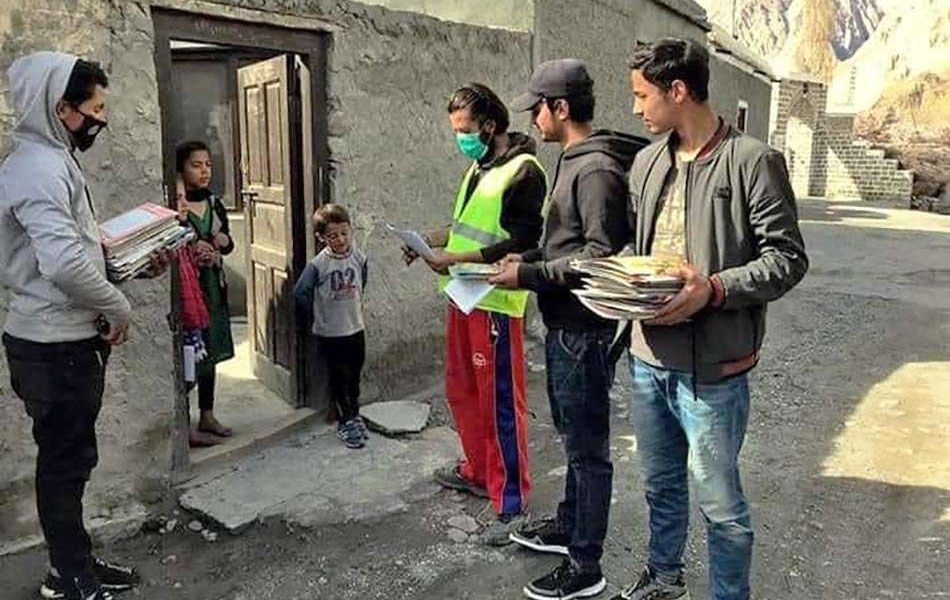As dark clouds wrap descend on the famous Passu Cones, a group of boys wearing light green hi-viz jackets gather at the library of the Aga Khan Diamond Jubilee School, the sole school in the village.
They look at the pile of books and a female teacher hands them a list of the students of the school. The teacher guides them in splitting the books into different stacks. The young boys carry the books and step outside dispersing in different directions in groups of four.
They go door to door distributing these storybooks among the students of the school because there the school is closed down and not everyone in the village has access to the internet which is hampering the education of the kids.
The idea is to keep the students busy with storybooks but these young boys do not just distribute books. They ask the students about the books they have read, their favorite characters, what they like about the story, what they learned from it and what type of book they would like to read next and they make notes of it which are later handed over to the teachers.
These boys are not paid off the job and neither they want to. These young boys in their twenties are also students studying at different colleges and universities in various Pakistani cities who are in the village at this time because their colleges and universities are also closed due to the COVID-19 in Gilgit-Baltistan and they want to utilize their vacations and contribute to the society.
This concept of “contribution” is deeply rooted in the local culture. Every individual is taught to contribute to the village in the form of time and knowledge. Children in Hunza grow up by serving their community as young as seven. As little scouts or guides, they serve their community by giving them water during religious festivals. As they grow up, they render their services in boys scouts and girls guides.
At later stages, they serve in different capacities depending on their expertise. Every village in Hunza has at least a dozen volunteer committees that manage the social life ranging from taming animals from venturing out into other fields to managing tourism, wildlife, local festivals, education, and social welfare. All these institutions are run on a voluntary basis and their members are selected for a term of one year.
One can be a teacher in normal life but after school, he is bound to give time to the education committee of the village. Similarly, a banker serves as a member of the wildlife committee and has to play an active part and manage his time for the organization. A shopkeeper or trader can manage his business the whole day but he has to take out at least one hour for the economic activity committee that he is a part of. Or a housewife has all the time for her domestic chores but she has to attend meetings and manage events of the women activities committee.
So everyone has to dedicate a part of their personal/professional life for the collective life of the village. That’s the secret behind the success of a parallel collective complex social life of the Hunza people or what some call the “Hunza factor”.


Leave a Comment